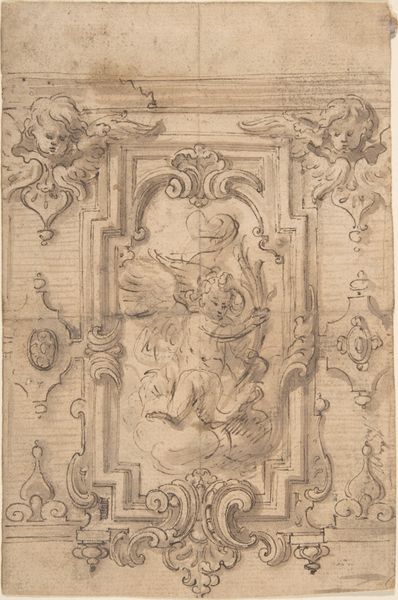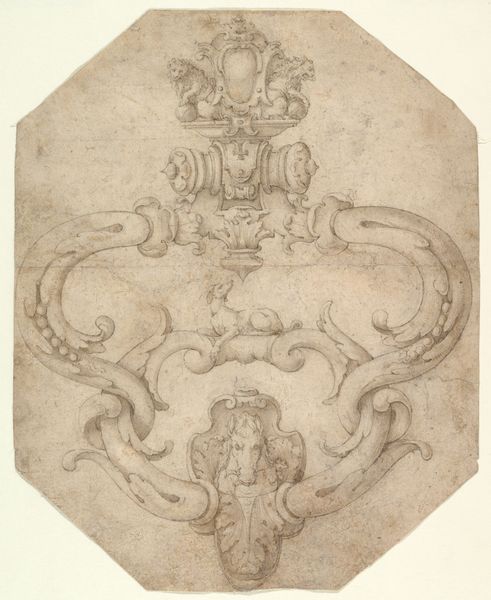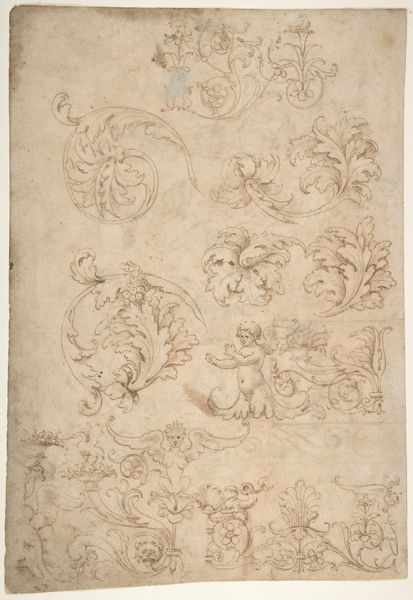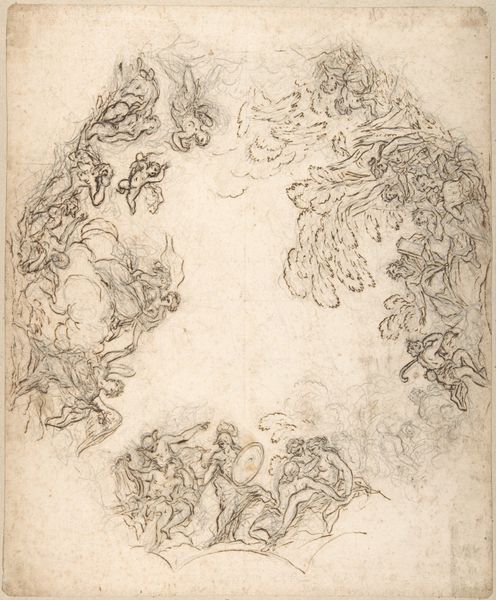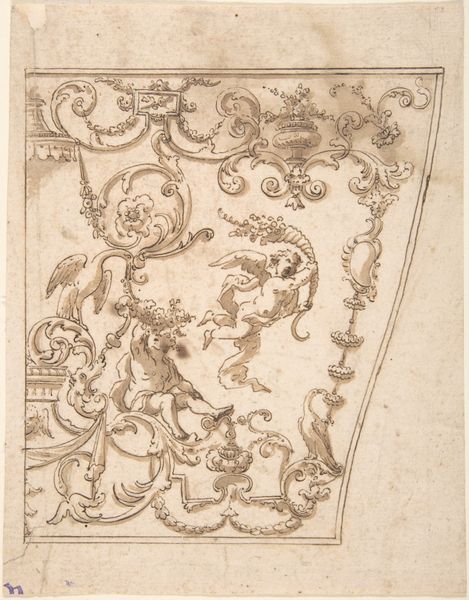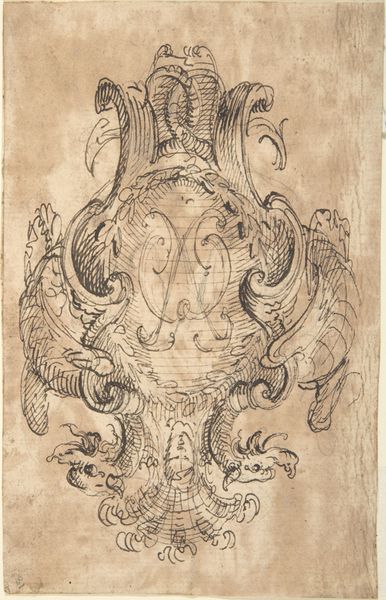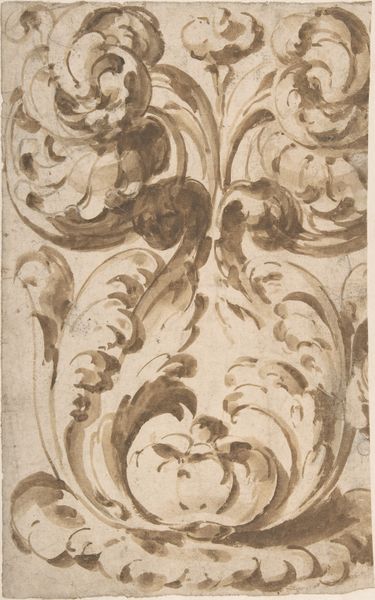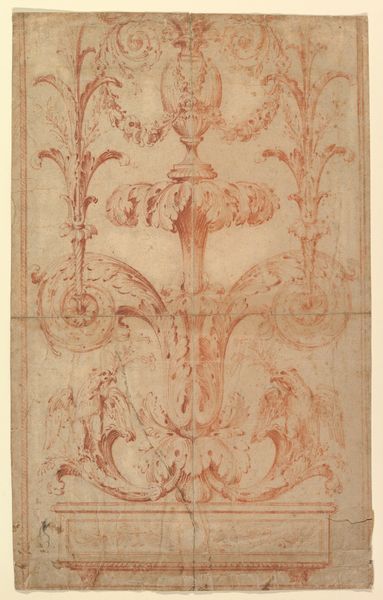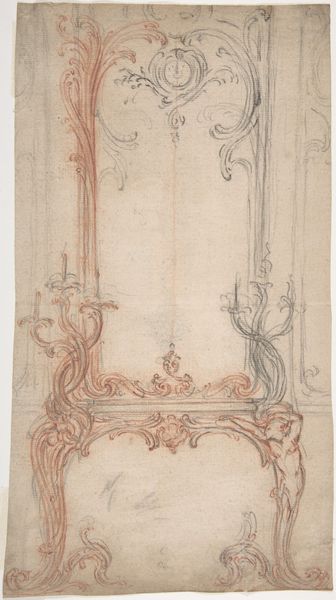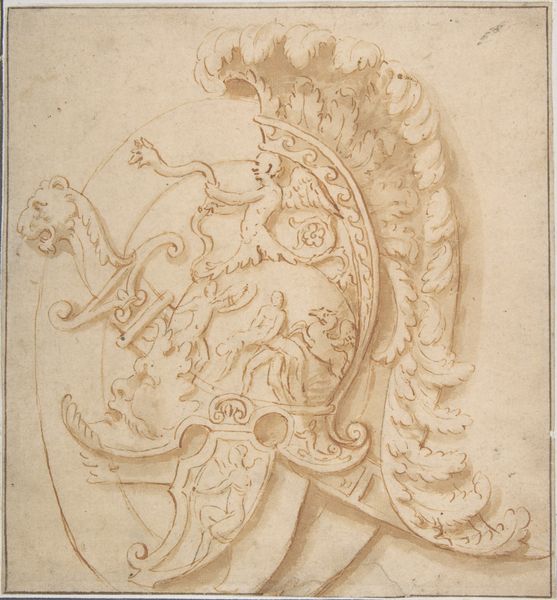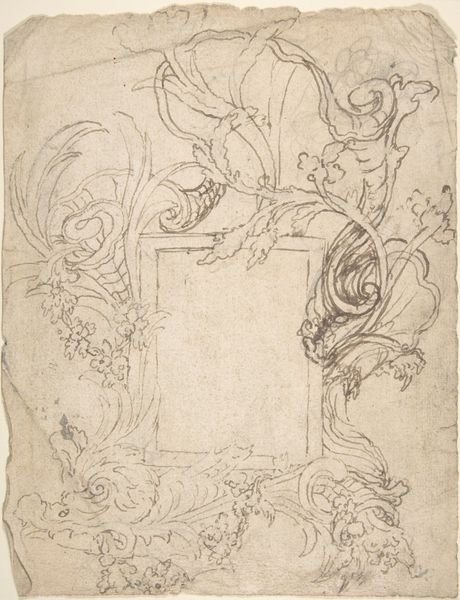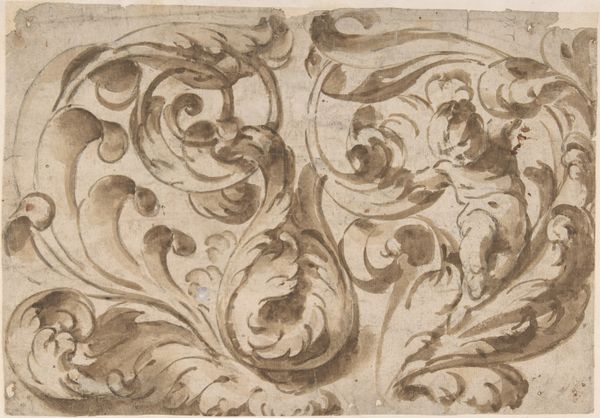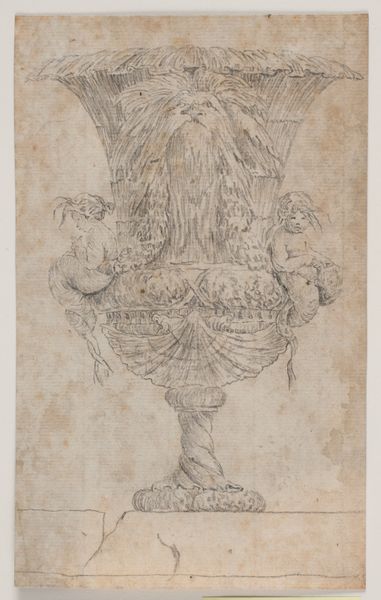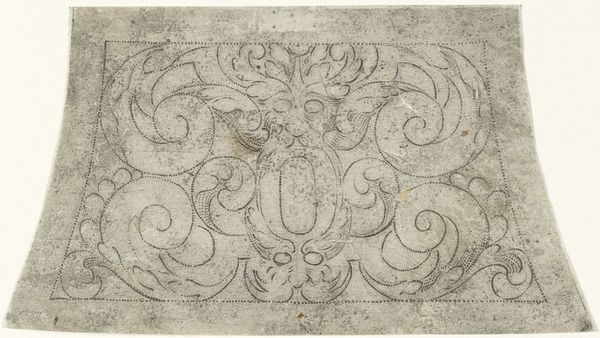
drawing, print, pencil, charcoal
#
portrait
#
drawing
#
head
# print
#
charcoal drawing
#
11_renaissance
#
pencil drawing
#
geometric
#
pencil
#
charcoal
Dimensions: sheet: 5 x 4 1/2 in. (12.7 x 11.5 cm)
Copyright: Public Domain
Editor: We're looking at an intriguing piece called "Foliate Grotesque Head" dating back to the 16th or 17th century, its artist unfortunately unknown. It seems to be a charcoal drawing. The more I look at it, the more curious I get about the materials used and their effect on the artwork. What do you see in this drawing? Curator: I'm immediately drawn to the artist's hand, how they’ve manipulated the charcoal. The roughness, the smudging – these aren't accidental. It speaks volumes about artistic labor. Note the transition from charcoal lines into print, suggesting the artwork's means of distribution within its social context. Were these drawings a cheap method of distribution for those that could not afford paintings? Editor: So, you're focusing less on who made it and more on how it was made, the physical process? That's a refreshing perspective! Does this mean the intention of the artist, matters less in your analysis? Curator: Exactly! The social and economic realities behind production are what I find most interesting. Think about the availability of materials like charcoal at the time, or the skill required. Even the “grotesque” aspect might be less about aesthetics and more about challenging established notions of beauty through readily available, common materials. Editor: So, the artist is consciously using the limitations of their resources to make a statement? Is the use of these humble materials the intention? Curator: Perhaps "statement" is too strong, but yes, considering materials draws focus from individual authorship to broader cultural and material conditions that allowed art objects to manifest and function within society. Think of the production line and commercial possibilities that prints availed, versus paintings. Editor: I see, I never really considered the economic background to such an art. Thanks to you, I have more elements to look at when art is shown in the gallery. Curator: Absolutely! Art history is about so much more than individual genius, it's the study of collective practices and means of production as cultural mirrors.
Comments
No comments
Be the first to comment and join the conversation on the ultimate creative platform.
